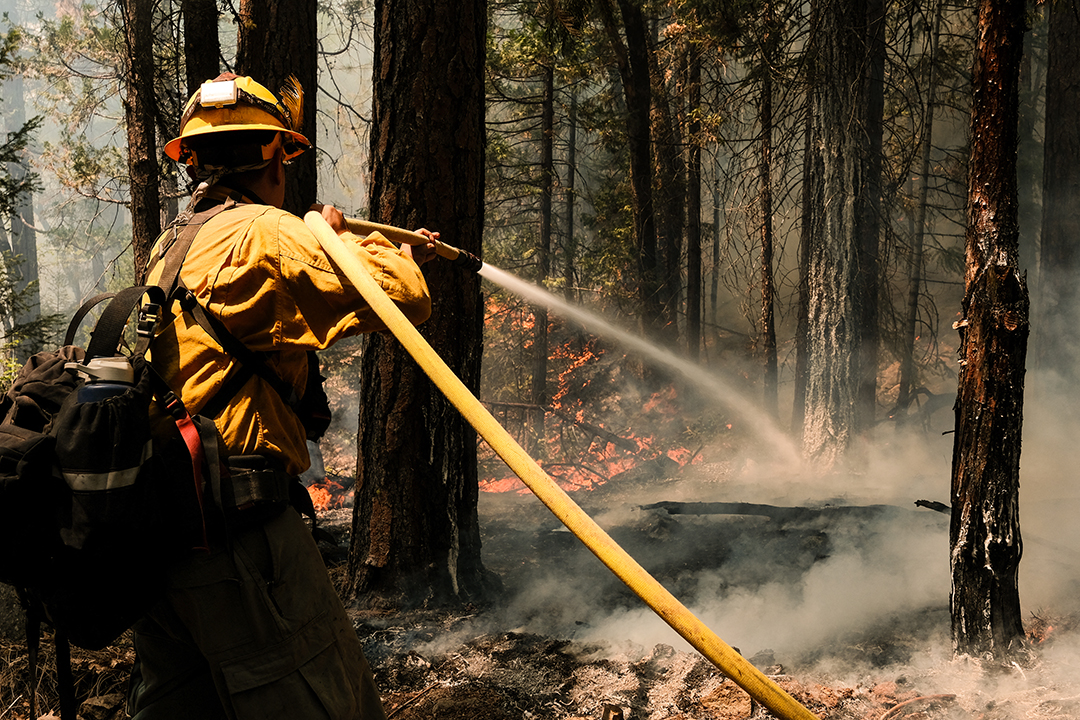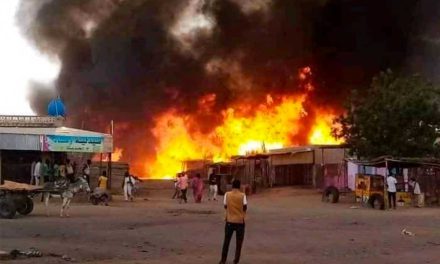
The Dixie Fire in Northern California in August 2021, which incinerated nearly 500,000 acres of forest. Forest wildfires exacerbate the very carbon emission problem they purportedly solve. Photo: David Odisho/Getty Images via AFP
In the wake of the recent International Energy Agency (IEA) Net Zero by 2050 report, and the Sixth Intergovernmental Panel for Climate Change (IPCC) report, the world is rapidly shifting in pursuit of a net zero emissions future. The IPCC report warns that the planet is on course to exceed 1.5 degrees of warming – above pre-industrial levels – in the next 20 years unless significant action is taken. In turn, the IEA’s Net Zero by 2050 report draws a roadmap for the future of the global energy sector to make the changes needed to keep warming under 1.5 degrees.
Both reports advocate for an end to new fossil fuel investments and increased investment in renewable energy, and the infrastructure required for its functioning. Additionally, the IPCC report proposes the decarbonisation of supply chains across various economic sectors as a path towards mitigation.
Several countries, including the United States, the People’s Republic of China, Canada and Japan, have set out timeframes to reach both net-zero and peak emissions targets. However, many of these countries have not fulfilled their commitments under the 2015 Paris Climate Agreement. Equally, how these countries intend to achieve these objectives remains vague.
The trade-offs in the pursuit of a net zero future
The pursuit of the net-zero future proposed by both IEA and IPCC requires trade-offs. Trade-offs occur when there is a need to sacrifice something (emissions) to obtain a benefit (a net-zero future). Deciding which trade-offs to incur requires understanding that future economic development depends on ecological sustainability.
The recent floods in Germany and China, as well as the snowstorms experienced by Texas in February of 2021, show that climate change presents risks to firms, their infrastructure, and global supply chains. There is growing dialogue around companies aligning their strategies with Environmental, Social, and Governance (ESG) performance criteria and avoiding the risks of greenwashing. Here, the concerns about companies’ environmental footprint and impact, their human rights record, and how the board manages corporate governance are significant. The growing ESG emphasis in capital markets offers an opportunity to approach some of the challenges presented by the trade-offs needed in pursuit of a net zero future. Increasingly, access to global capital is likely to be determined by firms’ ESG credentials.
According to the United States Energy Information Administration (EIA), global energy usage is expected to increase by almost 50% by 2050. With increasing energy demand driven by increasing urbanisation and global population growth, energy security in a net zero world is a pressing challenge, and there are concerns that the pursuit of renewable energy supplies will result in an inability to meet demand.
Many governments in developing countries have expressed concern that renewable energy will prove unable to meet base load demand requirements for running an industrialising economy. Some European countries are even confronting a challenge to their energy security, which some politicians and commentators are partially blaming on the push towards renewable energy sources. Many view these developments as a moment of truth for Europe’s green ambitions. Addressing energy security anxieties associated with renewables requires several solutions. These include upgrading the carrying capacity of national power grids, developing interconnected decentralised micro-grids, and ensuring efficient storage capacity.
Concerns in the pursuit of a net zero future
Carbon sequestration, the process of capturing and storing atmospheric carbon, is critical to the net-zero ambitions of countries and firms. Carbon offsetting refers to the process by which carbon emissions are reduced to compensate for emissions produced elsewhere.
Currently, the most common method of carbon offsetting is tree-planting. Here, firms pay organisations to plant trees that compensate for the firm’s carbon emissions. A major question that emerges is whether these projects can generate the carbon benefit claimed. For instance, a Financial Times article warns of the risk of carbon offsetting essentially equating to a license to pollute, couched in the language of net zero ambitions.
Additionally, the recent wildfires in Northwest America, Algeria, Turkey, and Greece present a clear warning for firms and policymakers. As global temperatures increase and wildfires become more common, these trees (often non-indigenous to the local environment) carry ignition risk and exacerbate the very carbon emission problem they purportedly solve. Indigenous forest recreation and restoration, to the contrary, solve the tree-planting model’s problem because the resultant ecosystem serves as natural fire protection. Forest recreation and intact landscape preservation is therefore a more optimal policy direction to take.
Carbon Tanzania, a social enterprise focused on landscape conservation and providing local populations with tangible benefits for doing so, offers a model for firms and countries to follow. It provides direct cash payments for preservation efforts, limiting the incentives for poaching and over-harvesting of wild animals and natural resources.
According to an article in Nature, wetlands in the United States store 11.52 PgC (pentagrams – 1015 grams – of carbon), while another article suggests the world’s wetlands may constitute carbon sinks of up to 830 Tg/year (teragrams per year – 1012 grams). The preservation of intact ecosystems clearly has significant carbon sequestration potential.
A final issue to consider is that the critical minerals required to sustain global renewable energy and transport revolutions are in short supply. Increases in extraction volume and refinement processes are required to meet demand, which will require geological exploration into new areas, some of which are currently untouched. Mining also typically results in environmental degradation unless new technologies are rapidly deployed to ameliorate the worst of its ecological impact. Equally, concerns are emerging around the potential use of child labour and the susceptibility of communities to increased conflict in the extraction of these minerals. According to a report by the ILO, child labour remains a serious mining industry problem in some jurisdictions.
Conclusion
Both the IEA’s Net Zero by 2050 report and the 6th IPCC report highlight the need for a shift away from fossil fuels in the global energy supply. This is essential to meet the targets of the Paris Climate Accord and achieve net zero emissions by 2050.
However, this pursuit will require attention to the trade-offs and concerns that animate the process. These include addressing the trade-off between meeting future energy demand and our green energy resource capacity to do so. Equally, it needs to address trade-offs between the increased demand for critical minerals and the environmental and social impacts this has on local communities. Lastly, the question of carbon offsetting and associated concerns around its usage as a license to emit must be addressed. If negative externalities are internalised and properly accounted for, incentives would shift from development ambitions to follow an ecologically sustainable trajectory. It would also result in more sensible pricing of carbon, shifting firms towards more concrete offsetting mechanisms.
The 26th Congress of the Parties (COP26) meeting once more brings these questions to the forefront. Policymakers will need to robustly evaluate how they intend to manage these trade-offs in the development of future policy and move towards net-zero in a way that serves people and the planet we all share.
This article was first published on BusinessLive
Vincent Obisie-Orlu is a Natural Resource Governance researcher at Good Governance Africa. He holds a BA in International Relations and Political Studies from the University of the Witwatersrand. His work focuses on natural resource governance of critical minerals, Environmental Social and Governance (ESG) issues, sustainable finance, and energy policy in light of the energy transition.












